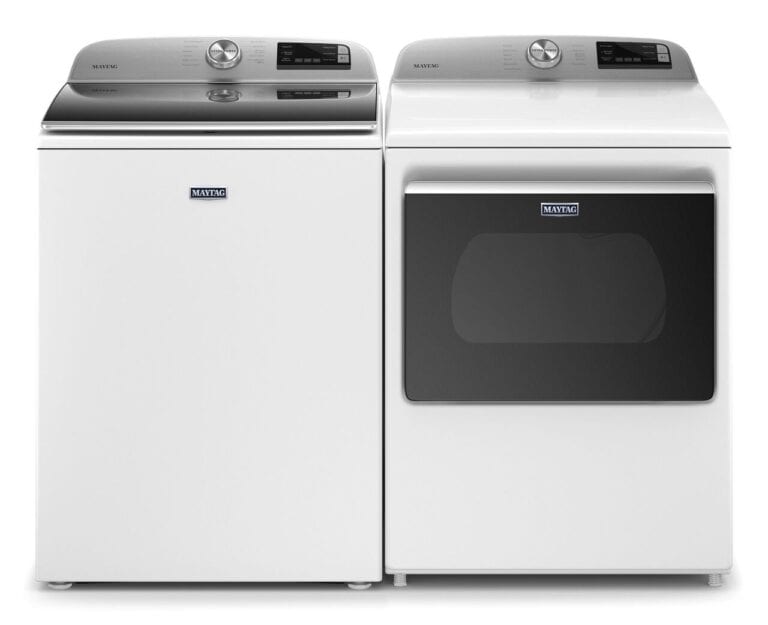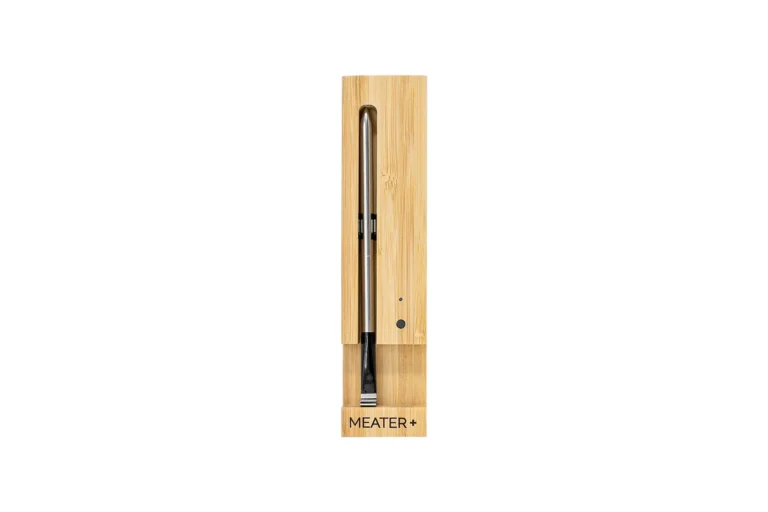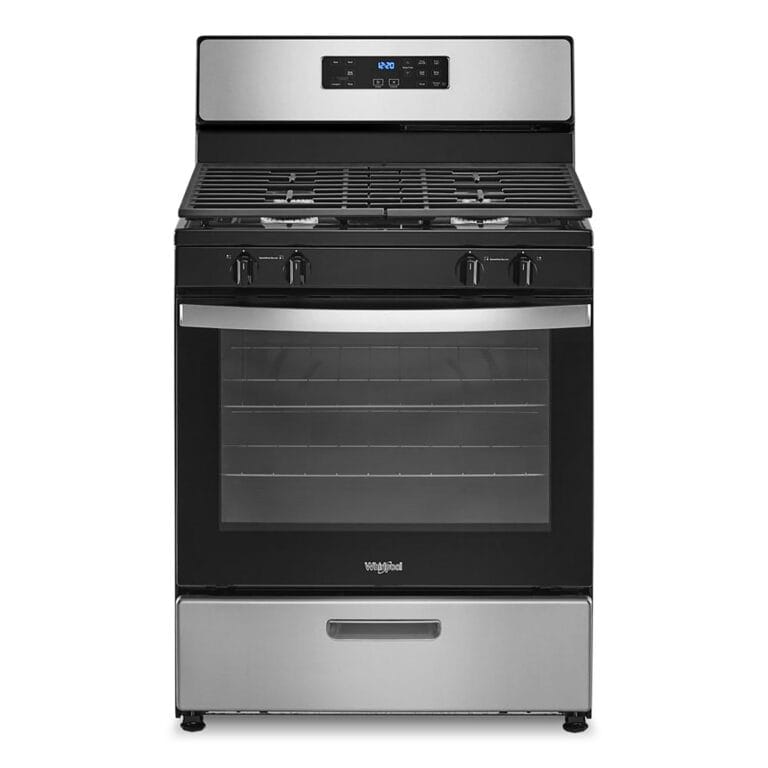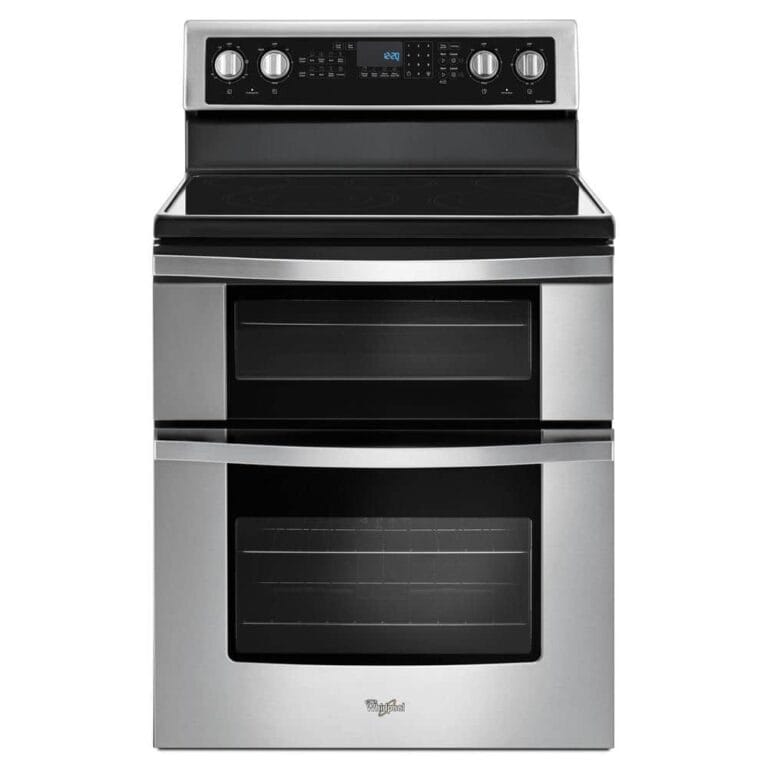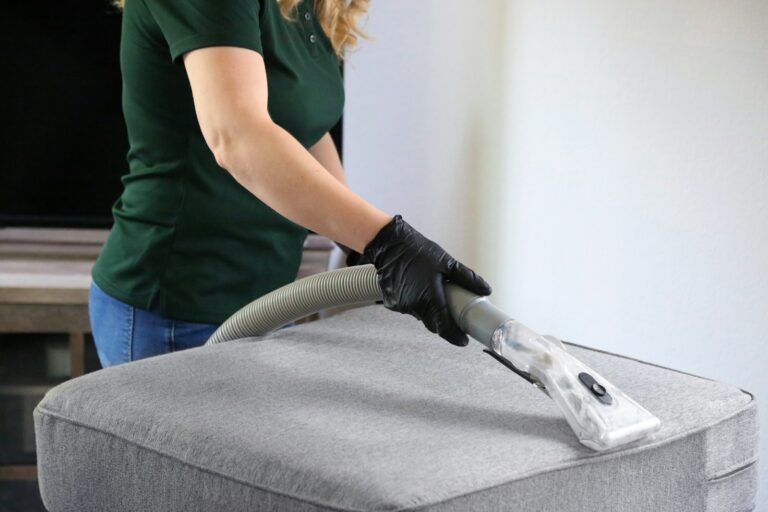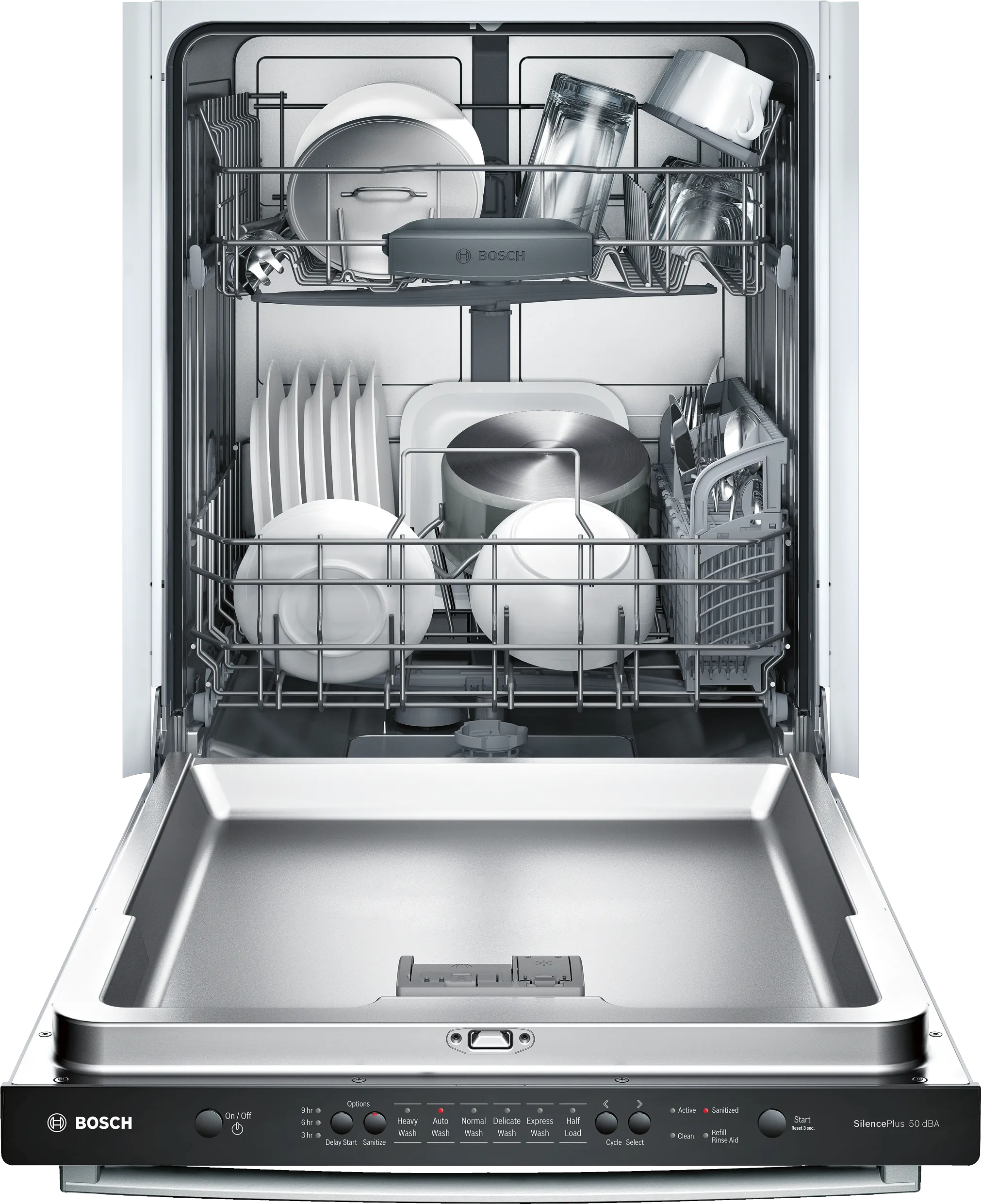
Dishwashers are designed to save time and water, but when something goes wrong, it can disrupt your entire kitchen routine. This guide covers the most common dishwasher problems, their likely causes, and step‑by‑step solutions you can try before calling a repair service.
1. Dishwasher Won’t Start
Possible Causes:
- Power supply issue
- Faulty door latch
- Control panel error
Fixes:
- Make sure the dishwasher is plugged in and the breaker hasn’t tripped.
- Close the door firmly until it clicks.
- Check the control lock/child lock setting and disable it if active.
- If unresponsive, reset the dishwasher by unplugging it for 1–2 minutes.
2. Dishes Aren’t Getting Clean
Possible Causes:
- Spray arms clogged
- Low water temperature
- Overloaded or improperly loaded racks
- Detergent issues
Fixes:
- Remove and clean spray arms under running water.
- Run hot water at the sink before starting the dishwasher to ensure hot fill.
- Avoid overloading; face dirty surfaces toward the spray arms.
- Use fresh dishwasher detergent and check the dispenser door isn’t blocked.
3. Dishwasher Not Draining
Possible Causes:
- Clogged filter or drain hose
- Garbage disposal not cleared
- Faulty drain pump
Fixes:
- Remove and clean the dishwasher filter (usually at the bottom).
- Check the drain hose for kinks or clogs.
- If connected to a garbage disposal, run it to clear blockages.
- If water still won’t drain, the pump may need professional service.
4. Dishwasher Leaking
Possible Causes:
- Door gasket worn or dirty
- Overfilled with detergent
- Loose or cracked hoses
Fixes:
- Inspect and clean the door gasket with warm soapy water; replace if cracked.
- Use only dishwasher detergent (not regular dish soap).
- Check hoses and clamps for leaks and tighten or replace as needed.
5. Dishwasher Making Strange Noises
Possible Causes:
- Items hitting spray arms
- Hard debris in the pump
- Worn motor or bearings
Fixes:
- Rearrange dishes to prevent spray arm obstruction.
- Clean the filter and pump area of foreign objects.
- If grinding or squealing persists, a service call may be needed.
6. Dishwasher Smells Bad
Possible Causes:
- Food buildup in filter or drain
- Mold or mildew inside tub
Fixes:
- Clean the filter and drain area thoroughly.
- Run a cleaning cycle with dishwasher cleaner or a cup of white vinegar.
- Leave the door slightly open between cycles to allow ventilation.
7. Dishwasher Not Drying Dishes
Possible Causes:
- Rinse aid empty
- Heating element failure
- Wrong cycle selection
Fixes:
- Refill rinse aid dispenser.
- Select a heated dry cycle if available.
- If dishes are consistently wet, the heating element may need replacement.
Quick Reference Table
| Problem | Likely Cause | Quick Fix |
|---|---|---|
| Won’t start | Power, latch, control lock | Check plug, door, reset settings |
| Dishes not clean | Spray arms, loading, detergent | Clean arms, load properly, use fresh soap |
| Not draining | Clogged filter/hose, disposal issue | Clean filter, check hose, run disposal |
| Leaking | Gasket, detergent, hoses | Clean/replace gasket, check hoses |
| Noisy | Spray arm hitting, debris, motor | Rearrange dishes, clean filter |
| Smells bad | Food buildup, mold | Clean filter, run vinegar cycle |
| Not drying | No rinse aid, heating issue | Add rinse aid, check heating element |
When to Call a Professional
- Persistent electrical issues (breaker trips, no power).
- Water leaks that continue after gasket/hoses are checked.
- Pump or motor making loud grinding noises.
- Heating element failure.
Final Tips
- Clean the filter monthly for best performance.
- Use the right detergent and avoid overfilling.
- Run hot water at the sink before starting a cycle.
- Keep the door gasket and spray arms clean.
With regular maintenance and these troubleshooting steps, you can extend the life of your dishwasher and avoid costly repairs.
Dishwasher Maintenance Checklist
Keeping your dishwasher clean and well-maintained helps prevent problems, improves cleaning performance, and extends its lifespan. Use this checklist for monthly and quarterly care.
Monthly Maintenance
- ✅ Clean the filter
- Remove the bottom filter and rinse under warm running water.
- Use a soft brush to scrub away grease and debris.
- ✅ Wipe down the door gasket
- Clean the rubber seal with warm soapy water to prevent mold and leaks.
- ✅ Check spray arms
- Remove spray arms and rinse out food particles or mineral buildup.
- Use a toothpick to unclog spray holes if needed.
- ✅ Run a cleaning cycle
- Place a cup of white vinegar on the top rack and run a hot cycle.
- Optional: use a dishwasher cleaner tablet instead of vinegar.
- ✅ Inspect detergent and rinse aid dispensers
- Make sure they open/close properly and refill rinse aid if low.
Quarterly Maintenance
- ✅ Deep clean interior
- Sprinkle baking soda on the bottom and run a short hot cycle for odor control.
- ✅ Check and clean the drain hose
- Inspect for kinks or buildup and flush with warm water if necessary.
- ✅ Inspect racks and wheels
- Look for rust, cracks, or broken wheels. Replace if damaged.
- ✅ Check water inlet valve and hoses
- Ensure no leaks, cracks, or mineral buildup are present.
- ✅ Test cycle performance
- Run a full cycle with dishes and confirm cleaning and drying are effective.
Yearly Maintenance
- ✅ Inspect heating element (if visible)
- Look for signs of damage or corrosion.
- ✅ Check for hard water buildup
- If you live in a hard water area, consider using a water softener or descaler.
- ✅ Professional service checkup
- Have a technician inspect if you notice recurring issues.
Quick Tips for Daily Use
- Scrape (don’t rinse) dishes before loading to prevent clogs.
- Avoid overloading; leave space for water circulation.
- Always run hot water at the sink before starting the dishwasher.
- Leave the door slightly open after cycles to prevent odors.
👉 By following this checklist, you’ll reduce breakdowns, improve efficiency, and keep your dishwasher running smoothly year after year.
What Does A Dishwasher Fixer Do?
Dishwasher fixers play a crucial role in keeping kitchens running smoothly. These skilled professionals diagnose and repair a wide range of dishwasher issues, from minor leaks to major malfunctions. A dishwasher fixer can save homeowners money by extending the life of their appliance and avoiding costly replacements.
Fixing a dishwasher requires technical knowledge and hands-on experience. Dishwasher repair technicians must understand the inner workings of various brands and models. They use specialized tools and techniques to troubleshoot problems and replace faulty parts.
For simple issues, homeowners can often perform basic maintenance themselves. However, complex repairs are best left to the experts. Professional dishwasher fixers ensure safe and effective repairs, providing peace of mind to their customers.
Key Takeaways
- Dishwasher fixers diagnose and repair various appliance issues
- Professional repairs can extend a dishwasher’s lifespan and save money
- Complex problems require expert knowledge and specialized tools
Understanding Dishwasher Functionality
Dishwashers clean dishes through a combination of water spray, detergent action, and heat. These appliances use various components and go through specific cycles to effectively clean and sanitize dishes.
Components of a Dishwasher
The main parts of a dishwasher include the spray arms, inlet valve, heating element, and drain. Spray arms distribute water and detergent throughout the dishwasher. They are usually located at the bottom and middle of the machine.
The inlet valve controls water flow into the dishwasher. It opens to allow water in and closes to stop the flow. This valve is crucial for maintaining proper water levels during different cycle stages.
A heating element warms water for better cleaning and helps dry dishes after washing. It’s typically found at the bottom of the dishwasher tub.
The drain removes dirty water from the dishwasher. It works with a pump to expel water through a hose connected to the home’s plumbing system.
The Dishwasher Cycle: An Overview
A typical dishwasher cycle involves several stages:
- Pre-rinse: Light spray removes loose food particles
- Main wash: Hot water and detergent clean dishes
- Rinse: Clean water removes soap residue
- Dry: Heated air dries dishes
The cycle begins when water enters through the inlet valve. Detergent is released, and the spray arms distribute the soapy water. The heating element warms the water for more effective cleaning.
After the main wash, fresh water rinses the dishes. Finally, the heating element activates again to dry the clean dishes. Throughout the process, timers ensure each step occurs at the right moment for optimal cleaning results.
Diagnosing Common Dishwasher Issues
Identifying and resolving dishwasher problems can save time and money. Regular maintenance and prompt attention to issues help keep these appliances running smoothly.
Dishwasher Doesn’t Start
A non-starting dishwasher often stems from power supply problems. Check if the appliance is properly plugged in and the outlet is functioning. Inspect the circuit breaker for any tripped switches.
Examine the door latch mechanism. A faulty latch prevents the dishwasher from initiating its cycle. Clean any debris around the latch and ensure it closes securely.
Verify the control panel settings. Reset the controls if necessary. Some models have child lock features that may accidentally activate, preventing operation.
If these steps don’t work, the issue may lie with internal components like the thermal fuse or control board. These repairs typically require professional assistance.
Dishwasher Not Cleaning Properly
Poor cleaning performance often results from improper loading or inadequate water supply. Ensure dishes are arranged to allow water and detergent to reach all surfaces.
Check the spray arms for clogs or damage. Remove any debris blocking the water jets. Verify that the arms spin freely during operation.
Inspect the dishwasher’s filter system. A clogged filter restricts water flow and reduces cleaning effectiveness. Clean or replace filters as needed.
Water temperature plays a crucial role in cleaning. Most dishwashers require water between 120-150°F (49-66°C) for optimal performance. Use a thermometer to check the hot water supply temperature.
Consider the detergent quality and amount used. Too little detergent leads to poor cleaning, while excess causes residue. Follow manufacturer recommendations for detergent type and quantity.
Dishwasher Not Draining
A dishwasher that doesn’t drain properly leaves standing water in the tub. Start by checking the drain hose for kinks or blockages. Ensure the hose is properly connected to both the dishwasher and drain system.
Examine the dishwasher’s drain filter and pump area for debris. Remove any visible obstructions like food particles or broken glass.
Verify that the air gap (if present) is clear. This device prevents sink water from backflowing into the dishwasher.
Run the garbage disposal before starting the dishwasher. Many dishwashers connect to the disposal, and a clogged disposal can prevent proper draining.
If these steps don’t resolve the issue, the drain pump may be faulty. This component requires professional replacement.
Dishwasher Not Drying
Drying problems often stem from rinse aid deficiency. Ensure the rinse aid dispenser is filled and functioning correctly. Rinse aid helps water sheet off dishes, promoting faster drying.
Check the heating element at the bottom of the tub. A non-functioning element prevents proper drying. Use a multimeter to test for continuity.
Inspect the vent or fan system. Some dishwashers use a fan to circulate air and aid drying. A malfunctioning vent or fan hinders this process.
Consider the dish arrangement. Overloading or improper loading can trap moisture between items, leading to poor drying results.
Plastic items retain heat less effectively than glass or metal, often remaining wet after a cycle. This is normal and doesn’t necessarily indicate a dishwasher malfunction.
Unpleasant Odors from Dishwasher
Foul smells usually result from food residue or mold growth. Clean the dishwasher’s filter, spray arms, and door gasket regularly to prevent odor buildup.
Run an empty cycle with a dishwasher cleaner or white vinegar to eliminate odors and sanitize the interior.
Check the drain hose for proper installation. A poorly installed hose can allow sewage gases to enter the dishwasher.
Ensure dishes are rinsed before loading. While pre-washing isn’t necessary, removing large food particles helps prevent odor-causing buildup.
Leave the dishwasher door slightly open between uses to promote air circulation and prevent moisture accumulation.
Maintenance and Troubleshooting
Regular maintenance and quick troubleshooting can keep a dishwasher running smoothly. These practices help prevent common issues and extend the appliance’s lifespan.
Regular Cleaning and Upkeep
Dishwashers need routine care to function optimally. Clean the filter monthly by removing it and rinsing with warm, soapy water. This prevents clogs and improves cleaning performance.
Check the spray arms for blockages. Remove any debris from the holes to ensure proper water distribution. Wipe down the door seal with a damp cloth to prevent mold growth.
Run an empty cycle with vinegar once a month to remove mineral buildup. Place a cup of white vinegar on the top rack and run a hot water cycle.
Inspect gaskets regularly for wear or damage. Replace if necessary to maintain a watertight seal. Keep the exterior clean by wiping with a soft cloth and mild detergent.
Troubleshooting Tips for Quick Fixes
If dishes come out dirty, check the water temperature. It should be at least 120°F (49°C) for effective cleaning. Ensure dishes are loaded correctly, not blocking the spray arms.
For a dishwasher that won’t start, check the power supply and door latch. Ensure the machine is plugged in and the circuit breaker hasn’t tripped. Verify the door is fully closed and latched.
Address drainage issues by cleaning the drain hose and air gap. Remove any kinks in the hose. Clear the garbage disposal if connected, as clogs can prevent proper draining.
If the dishwasher leaks, inspect the door seal for damage. Tighten any loose connections under the sink. Check for cracks in the tub or loose spray arms that may cause water to escape.
When to Call a Professional
Certain dishwasher issues require expert attention. Complex electrical problems pose safety risks and should be handled by trained technicians. Persistent leaks can cause water damage and may indicate serious issues beyond simple fixes.
Strange noises during operation often signal mechanical failures. These can worsen if not addressed promptly by a professional. Incomplete cleaning cycles or poor washing results might stem from problems with internal components.
Consider calling a pro for:
- Electrical malfunctions
- Persistent leaks
- Unusual noises
- Ineffective cleaning cycles
- Error codes you can’t resolve
Appliance repairs by qualified technicians ensure safety and proper functioning. They have specialized tools and knowledge to diagnose and fix complex issues accurately.
Many repair services offer flexible scheduling options. This allows homeowners to book appointments at convenient times. Some companies even provide same-day or emergency services for urgent problems.
Professional dishwasher repair can save money long-term. Experts can identify and fix underlying issues, preventing costly replacements. They also maintain manufacturer warranties, which may be voided by DIY attempts.
Before calling, try basic dishwasher troubleshooting:
- Check power supply
- Clear debris from filters
- Ensure proper detergent use
If these steps don’t resolve the issue, it’s time to schedule dishwasher repair with a professional.
Frequently Asked Questions
Dishwasher repair can be complex, and many homeowners have common questions about finding services, identifying issues, and understanding costs. Here are answers to some frequently asked questions about dishwasher repair.
How can I find a reliable dishwasher repair service near me?
To find a trustworthy dishwasher repair service, start by asking friends and family for recommendations. Check online directories and review sites for local appliance repair companies. Look for technicians with proper certifications and experience with your dishwasher brand. Contact multiple services to compare quotes and availability.
What are the signs that my Whirlpool dishwasher may need professional repair?
Common signs a Whirlpool dishwasher needs repair include unusual noises, leaks, failure to start or complete cycles, and dishes not getting clean. If the dishwasher doesn’t fill with water, drain properly, or heat water, it may require professional attention. Persistent bad odors or error codes on the display also indicate potential issues.
Where can I read reviews for the best dishwasher repair services?
Reviews for dishwasher repair services can be found on platforms like Yelp, Google Reviews, and Angi. The Better Business Bureau website offers ratings and customer feedback. Some appliance repair companies display testimonials on their websites. Local community forums and social media groups can also provide recommendations and experiences from neighbors.
What are the factors to consider when looking for an affordable dishwasher repair specialist?
When seeking an affordable dishwasher repair specialist, consider their experience, certifications, and warranty on parts and labor. Compare service call fees and hourly rates from multiple providers. Ask about any diagnostic fees and if they’re applied to the repair cost. Check if the technician offers any discounts for seniors, military personnel, or first-time customers.
What is the typical cost range for repairing a dishwasher?
The cost of dishwasher repair typically ranges from $100 to $300. Simple fixes like replacing a door latch or soap dispenser may cost less. More complex issues involving the motor or control board can exceed $400. The final price depends on the problem, required parts, and labor time. Some technicians charge a flat rate for common repairs.
What is the most common issue that requires professional dishwasher repair?
The most common issue requiring professional repair is a dishwasher not cleaning dishes properly. This problem can stem from various causes, including a clogged spray arm, faulty water inlet valve, or malfunctioning pump. Other frequent issues include leaks, draining problems, and failure to start. These often require a professional’s expertise to diagnose and fix correctly.

